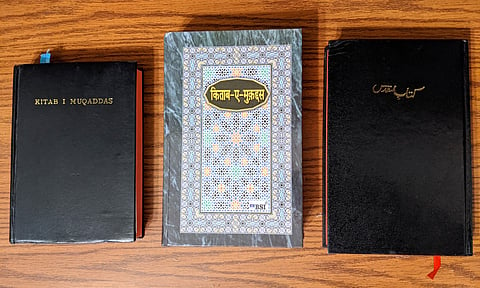The holy grail of language preservation: Bible translations in Southasia
This article is part of Dialectical, a Himal series that explores Southasia’s languages, their connections and shared histories.
Nobody has made a greater contribution in documenting and conserving vulnerable languages on a global scale than Bible translators. In translating the Bible, many scholars initiated the preparation of grammars and dictionaries for various unwritten and undocumented languages, thereby documenting, standardising and preserving them. While the Bible's original text is in three languages: Hebrew, Koine (common Greek), and Aramaic, according to Wycliffe Bible Translators, as of 2021, the complete Bible has been translated into 717 languages. An estimated 1582 languages have at least the New Testament translated, and a further 1196 languages have some portions of the Bible translated. Many of these translations are also in Southasian languages belonging to six language families: Indo-Aryan, Dravidian, Austro-Asiatic, Tibeto-Burman, Andamanese and Kra-Dai. Here is the intriguing story of Bible translations in Southasia.
Histories of translation
Bible translation in Southasia traces its history to the arrival of Portuguese traders on the shores of India and Sri Lanka in the early 16th century. Four Franciscan missionaries arrived in Sri Lanka in 1545 during the reign of Bhuvanaikabahu VII of Kotte. Although not a Bible translation per se, these missionaries produced Christian literature in Sinhala, thereby bringing biblical words into the language. In the later centuries in the region, the growth of European imperialism further brought missionary zeal to spread the 'word of God' among its subjects.

